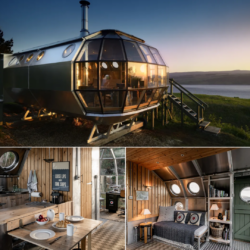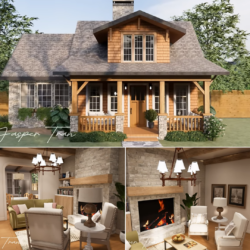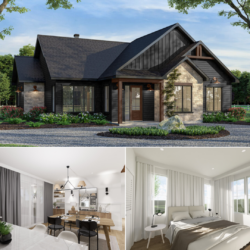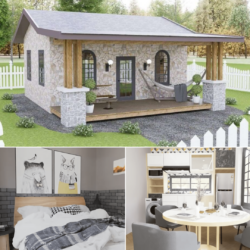
Tiny houses are a lifestyle that has gained popularity in recent years. People are showing interest in tiny houses to lead a simpler lifestyle, reduce costs and live in an environmentally friendly way. An ideal tiny house design combines functionality, efficiency, and comfort while aiming to make the most of the space.

The key to designing a tiny house is to use space with maximum efficiency. Therefore, creating a multi-purpose layout that can perform many functions even in a small space is important. An open-plan design creates a more spacious feel while unifying living spaces. Solutions such as integrating the kitchen with the living room or bedroom make the space look wider and at the same time provide usability.



Storage areas should also be considered an important element of an ideal tiny house design. Useful storage spaces such as concealed cabinets or shelves can be created under raised platforms, in stairwells, or attics. Usability can be increased by integrating storage units under the furniture. In this way, things are stored in an orderly manner and the order of the house is maintained.

The use of natural light in tiny houses is also of great importance. Large windows, glass ceilings, or an open plan design allow more daylight into the home. This not only makes the space appear brighter and more spacious but also helps to reduce energy costs. At the same time, natural light improves the mood of those living in a tiny house and provides a more comfortable living space.

Outdoor use is an element that should not be overlooked in an ideal tiny house design. Outdoor areas such as balconies, patios, or patios offer more living space to tiny homeowners. These areas are ideal for activities such as eating, resting, or growing plants. It also allows for more interaction with nature and allows the tiny house to feel open to the outside.

Environmental considerations include energy efficiency, water conservation, and sustainable materials. A well-insulated tiny house reduces energy consumption and lowers heating or cooling costs. Renewable energy sources such as solar panels or wind turbines allow the house to generate its energy. Water can be saved with rainwater harvesting systems and environmental impacts are minimized through the use of recycled materials.

Also, an ideal tiny house design should support sustainability and harmonize with the natural environment. The house should be built from local materials or use recycled materials to reduce its environmental impact. Natural landscaping and vegetation blend into the home’s surroundings and support natural life. It is also important to use environmentally friendly features such as water-saving fixtures, energy-efficient lighting, and energy-efficient appliances.



An ideal tiny house design should also consider ergonomics and comfort. Practical and multi-purpose furniture makes better use of the space and makes the living area more comfortable. In addition, a suitable heating and cooling system, good ventilation, and adequate sound insulation also increase the comfort of the house.



As a result, an ideal tiny house design provides a combination of functionality, efficiency, comfort, and environmental harmony. This design provides maximum use in a small space, gives importance to storage areas, makes the best use of natural light, also makes use of outdoor spaces, and follows the principles of environmental sensitivity. In addition, it offers an ergonomic and comfortable living space. Tiny homeowners can take full advantage of tiny homes by adopting a simpler and more sustainable lifestyle.








